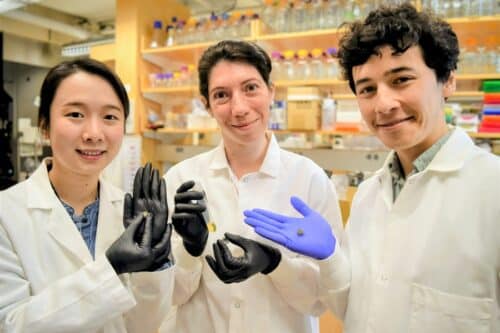- Merging engineered bacteria with energy-efficient electronics may revolutionize the diagnosis and treatment of bowel diseases
- With the ability to offer deeper insights into the complex world of the gut microbiome and facilitate more personalized therapeutic strategies

MIT and Boston University researchers have introduced a blueberry-sized smart pill that transforms the diagnosis and treatment of bowel diseases. This ingestible technology can identify and relay real-time data on biological markers, potentially indicating medical problems. It addresses the limitations of current invasive diagnostic methods by offering a safer, market-standard-compliant alternative that can detect crucial, yet short-lived, biological markers associated with bowel disease inflammation.
Possible Influence
Around 7 million individuals globally are afflicted with inflammatory bowel diseases (IBDs) such as colitis or Crohn’s disease. Tracking IBDs complicated by the onset of clinical flare-ups that frequently occur in patients guiding the pharmacological approach to managing their conditions. This system could revolutionise IBD management by facilitating early diagnosis, timely intervention during disease flare-ups, and the refinement of therapeutic strategies. The team demonstrated that the smart pill could identify nitric oxide, a transient molecule frequently linked with numerous IBDs. The sensors were also proficient at distinguishing varying concentrations of nitric oxide. This capability will enable to discern between a normal state and a diseased state. This distinction is vital, given the substantial variations in biomarker levels across different patients.
Grasping the Gut’s Complexity
The team believes the pill can be adapted to detect other vital biomarkers, offering a deeper understanding of the delicate gut microbiome crucial for food digestion. This fusion of microbes and electronics could broadly impact health monitoring, merging the strengths of biological and electronic aspects to innovate gastrointestinal tract assessments, potentially benefiting many and providing profound insights into bodily functions and the effects of diseases and treatments.
It has proven effective in pig trials and merges ingeniously designed live bacteria with integrated electronics and a miniature battery. These bacteria, which have also demonstrated success in external environments and mouse trials, emit light when they detect a specific molecule. This luminescence is then converted into a wireless signal by the pill’s electronic components. This signal can be relayed in real-time to a smartphone or another computing device, providing live updates as the pill navigates through the digestive tract.







